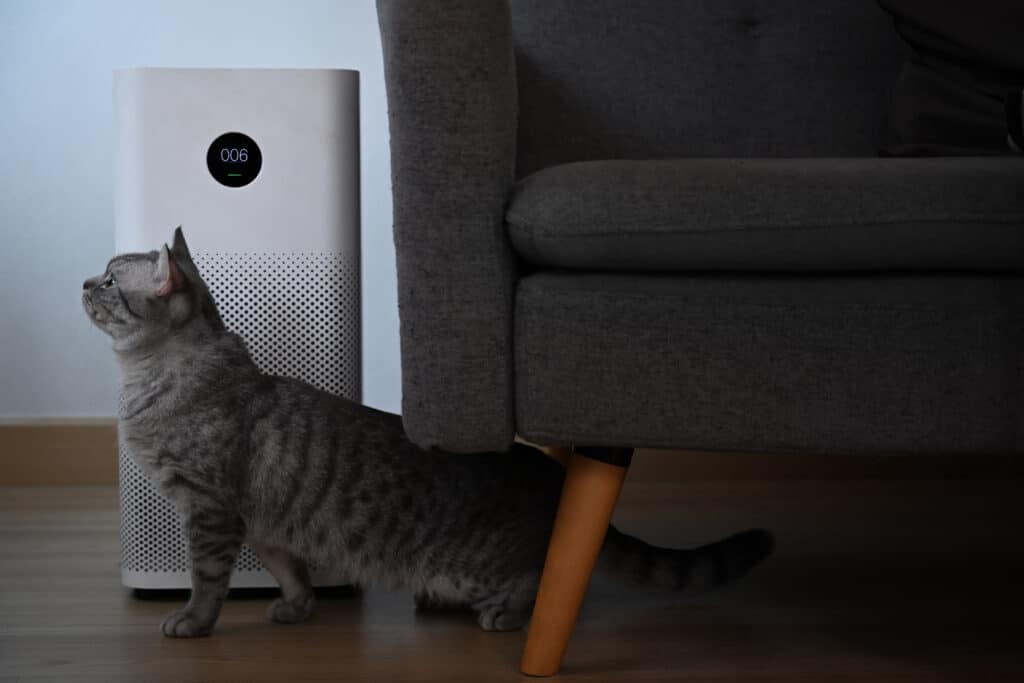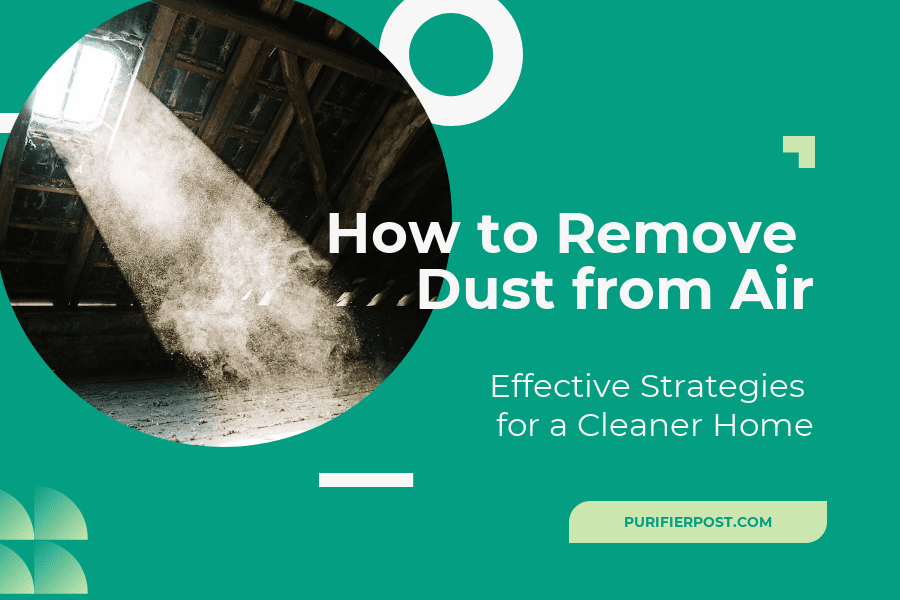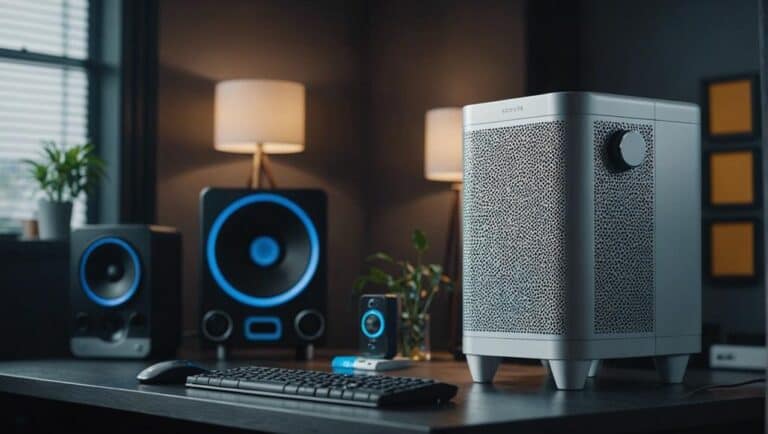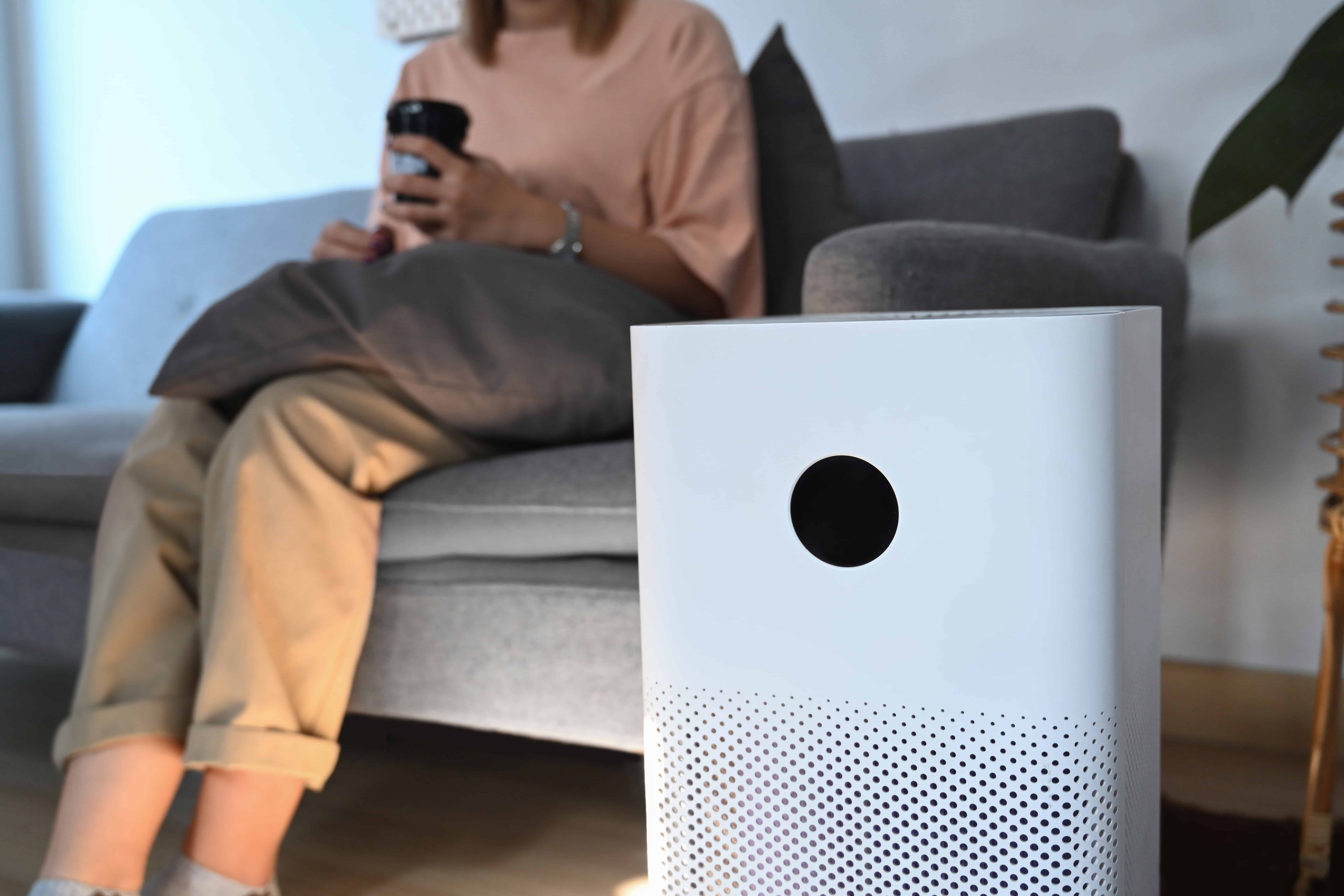How to Remove Dust from Air: Effective Strategies for a Cleaner Home
Dust in the air is a common issue that many people face in their homes, offices, and other indoor spaces. It can lead to a range of problems, such as allergies, asthma, and other respiratory issues, as well as simply making spaces look dirty and uninviting. In order to maintain a healthy and clean environment, it is essential to find ways to effectively remove dust from the air.
Removing dust from the air can be accomplished in several ways, including using air purifiers, keeping surfaces clean, and improving ventilation. In this article, we will explore these methods in detail, providing practical tips and recommendations on how to keep the air in your space as dust-free as possible. By implementing these strategies, you can reduce the risk of associated health problems and create a more comfortable and pleasant living or working environment.
Causes of Dust Accumulation
Dust accumulation in the air is primarily caused by several factors, which can be both natural and human-made. Understanding these causes can help in developing effective methods to remove dust from the air and maintain a clean environment.
Some of the natural causes of dust accumulation include:
- Soil erosion: Wind picks up small particles from the ground and transports them through the air, leading to dust accumulation.
- Pollen and spores: Plants release pollen and fungi release spores, which can often become airborne and contribute to dust accumulation.
- Animal dander: Dead skin cells and hair from pets and animals can become airborne, adding to dust levels in the air.
Human-made causes of dust accumulation include:
- Construction activities: Demolition, drilling, and excavation can release a significant amount of dust into the air.
- Manufacturing processes: Industries that involve grinding, cutting, or other processes that produce particles can contribute to dust accumulation.
- Home activities: Everyday activities such as cleaning, cooking, and even walking can dislodge dust particles and contribute to dust levels in the air.
These factors, combined with air circulation through heating and cooling systems, can cause dust to accumulate in indoor environments, affecting air quality and potentially causing health issues for occupants. By recognizing the sources of dust accumulation, it becomes easier to tackle the problem and keep the air as free from dust as possible.

Identifying Problem Areas
Before attempting to remove dust from the air, it’s essential to identify the main problem areas in your home or office space. Doing so will help you target specific areas that may require more attention or additional measures for effective dust reduction.
Common problem areas include:
- Furniture and upholstery: Sofas, chairs, and other soft furnishings can collect and release dust particles into the air.
- Carpeted floors: More dust tends to accumulate in carpets compared to hard floors, as fibers can trap particles more easily.
- Heating and cooling systems: Air vents, filters, and ducts can accumulate dust, redistributing it throughout the space when in use.
- Pets: Pet dander, fur, and feathers are major contributors to household dust.
Once you’ve identified the key problem areas, inspect them for any signs of excessive dust buildup, such as a thick layer of dust or visible dust particles in the air. This will help you determine which areas need immediate attention and which ones can be maintained through regular cleaning practices.
Air Purifiers and Filters
Air purifiers and filters are essential tools in the battle against dust and other airborne particles. They are designed to clean and purify the air within a room, effectively reducing the amount of dust accumulation.
Types of Air Purifiers
There are several types of air purifiers available on the market, each designed to target specific pollutants or serve specific needs. The most common types include:
- HEPA (High Efficiency Particulate Air) filters
- Activated carbon filters
- UV Germicidal irradiation (UVGI) purifiers
- Ionic air purifiers
HEPA filters are highly effective at capturing particles as small as 0.3 microns, making them the ideal choice for dust removal. Activated carbon filters, on the other hand, excel at removing odors and VOCs (volatile organic compounds).

Selecting the Right Air Purifier
When choosing an air purifier, it’s important to consider factors such as room size, noise level, energy consumption, and maintenance requirements. A few tips for selecting the right air purifier include:
- Opt for a HEPA filter if your primary concern is removing dust particles.
- Consider a unit with an activated carbon filter if you need to address odors or VOCs.
- Select a purifier with an appropriate CADR (Clean Air Delivery Rate) for the size of your room.
- Take note of noise levels, especially if the unit will be used in a bedroom or quiet living space.
Maintaining and Cleaning Air Filters
Regular maintenance of your air purifier is crucial to ensure its efficiency and longevity. This usually involves cleaning or replacing the filters periodically, as specified by the manufacturer’s guidelines. Some key points to consider for maintaining and cleaning air filters are:
- Regularly inspect the filters for any visible signs of wear or damage.
- Follow the manufacturer’s recommendations for how often to replace or clean the filter.
- Always turn off and unplug the air purifier before handling the filters.
- Consider using a soft brush, vacuum, or compressed air to gently clean the filters.
Proper Ventilation
One of the most effective ways to remove dust from the air is by ensuring proper ventilation in your living or working space.
Improving Indoor Air Circulation
To improve indoor air circulation, consider the following steps:
- Open windows and doors whenever possible to allow fresh air to enter.
- Use ceiling fans or portable fans to help circulate air within the room.
- Ensure that your furniture is not obstructing any vents or air returns.
Types of Ventilation Systems
There are various types of ventilation systems that can help reduce dust levels:
| Type | Description |
|---|---|
| Natural ventilation | Relies on passive air movement, such as through windows and vents. |
| Mechanical ventilation | Uses fans and ducts to remove stale indoor air and replace it with fresh outdoor air. |
| Hybrid or mixed-mode ventilation | Combines aspects of both natural and mechanical systems for a more balanced approach. |
Regular HVAC System Maintenance
Performing regular maintenance on your heating, ventilation, and air conditioning (HVAC) system can significantly reduce dust levels:
- Check and replace air filters every 1-3 months, or as recommended by the manufacturer.
- Clean the ducts and vents every 3-5 years, or more frequently if you have allergies or respiratory problems.
- Inspect the system for leaks or damage to ensure optimal efficiency.
Effective Cleaning Techniques
Keeping your home clean is one of the most effective ways to reduce airborne dust. In this section, we will discuss various cleaning techniques like dusting, vacuuming, and creating schedules to keep dust at bay.
Dusting Methods
Regular dusting is essential to prevent dust buildup on surfaces. Here are some effective dusting methods:
- Microfiber cloths: Use microfiber cloths instead of traditional feather dusters, as they trap dust particles instead of spreading them around.
- Damp cloth or mop: Slightly dampen your cloth or mop to help capture dust particles and prevent them from becoming airborne.
- Top-to-bottom approach: Start dusting from higher surfaces and work your way down to avoid covering recently cleaned areas with dust.
Vacuuming Strategies
Vacuuming not only helps remove dust from floors and carpets but also reduces airborne dust. Consider the following strategies for effective vacuuming:
- Use a HEPA filter vacuum: High-Efficiency Particulate Air (HEPA) filters can trap small dust particles and prevent them from recirculating into the air.
- Vacuum frequency: Vacuum high-traffic areas at least twice a week and other areas once a week.
- Vacuum attachments: Utilize various vacuum attachments to effectively clean corners, upholstery, and other hard-to-reach spots.
Cleaning Schedules and Tips
Creating a cleaning schedule and following some simple tips can help ensure a dust-free environment:
| Task | Frequency |
|---|---|
| Dusting | Weekly |
| Vacuuming | Weekly (twice for high-traffic areas) |
| Washing beddings | Every 1-2 weeks |
| Air filter replacement | As per manufacturer’s instructions |
Remember to:
- Declutter your living spaces to reduce dust accumulation.
- Always remove your shoes before entering your home to avoid bringing in outdoor dust.
- Minimize the use of carpets and heavy draperies as they tend to collect dust.
Controlling Outdoor Sources
Controlling outdoor sources of dust and allergens is essential for improving indoor air quality. In this section, we will discuss methods to address external factors and sealing doors and windows to reduce the infiltration of dust into your home.
Addressing External Factors
There are several environmental factors that contribute to the presence of dust and allergens in the air. Some steps you can take to reduce these external factors include:
- Maintaining a clean yard by regularly raking leaves, picking up debris, and trimming plants near windows and doors.
- Using low-pollen plants in your garden and avoiding plants with a high potential for airborne allergens.
- Removing shoes before entering the house to avoid tracking dust and other particles indoors.
- Keeping outdoor furniture clean and covered to reduce the accumulation of dust and allergens.
Door and Window Sealing
Proper door and window sealing can help prevent outdoor dust and allergens from entering your home. Here are some helpful tips for air sealing:
- Inspect the weather-stripping around doors and windows regularly, replacing any damaged or worn-out material.
- Use caulk to seal any gaps or cracks around window and door frames.
- Install door sweeps or door shoes to minimize the gap between the bottom of the door and the floor.
- Consider installing storm doors and windows to provide additional protection against outdoor dust and allergens.
By addressing external factors and ensuring proper door and window sealing, you can significantly reduce the amount of outdoor dust entering your home, leading to cleaner air indoors.
Conclusion
In summary, removing dust from the air is essential for maintaining a healthy and clean indoor environment. There are various methods and tools available to help you achieve this goal.
Some of the effective strategies include:
- Regular cleaning and dusting of surfaces
- Using air purifiers with HEPA filters
- Maintaining proper ventilation by opening windows
- Using humidifiers to maintain adequate moisture levels
- Placing indoor plants that help in filtering the air
By incorporating these methods, you can successfully reduce dust particles in your home or workspace, improving the overall air quality and promoting better health for everyone.







4 Comments